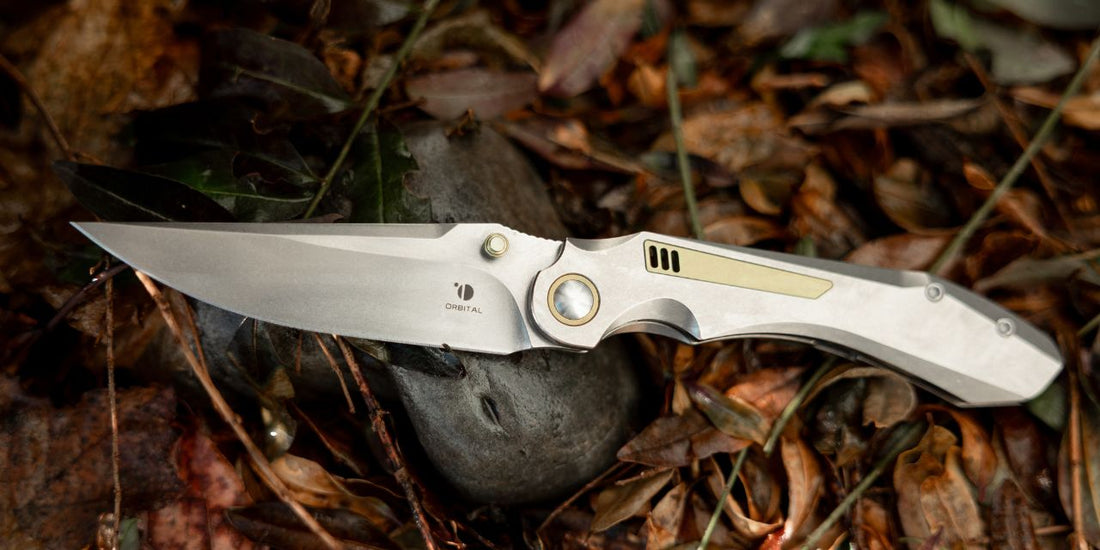For kitchen professionals, the performance of their tools is paramount. Among the myriad of concerns that can arise with kitchen knives, blade centering issues often stand out. This common problem can affect the knife's usability, safety, and longevity. But what exactly does it mean when a knife has centering issues?
Blade centering issues occur when the knife blade does not align perfectly within the handle, usually in folding knives. This misalignment can lead to uneven wear, reduced cutting efficiency, and even safety hazards. For any chef or culinary enthusiast, understanding and addressing these issues is crucial.

Causes of Blade Centering Issues
Several factors can contribute to blade centering issues, including manufacturing defects, wear and tear, and improper maintenance. Let's explore these causes in more detail:
Manufacturing Defects
In some cases, the issue begins right at the manufacturing stage. A slight miscalculation during assembly can lead to a poorly centered blade, which might not be noticeable until the knife is put to use. It's always recommended to purchase knives from reputable brands that ensure quality control.
Wear and Tear
Over time, consistent use of a knife can lead to wear and tear, impacting the blade's alignment. This is especially true for folding knives, where the mechanisms can become loose or worn out. Regular maintenance, such as tightening screws and cleaning, can mitigate these effects.
Improper Maintenance
Neglecting regular maintenance is a primary cause of blade centering issues. Regularly sharpening and cleaning your knives can help maintain their structure and alignment. For more on maintaining folding knives, you can read about the best angle for sharpening folding knives.
Solutions to Blade Centering Issues
Addressing blade centering issues can often be done with some simple adjustments and regular care. Here are some methods:
Tightening the Pivot
For folding knives, the pivot point is crucial for maintaining blade alignment. Using a screwdriver to tighten the pivot can often resolve minor centering issues. However, be cautious not to overtighten, as it can cause the blade to become too stiff.
Professional Servicing
When home remedies fail, seeking professional servicing might be necessary. Professional knife sharpeners can realign the blade and ensure that it operates smoothly. This is especially recommended for high-end knives.
Regular Maintenance
As mentioned earlier, regular maintenance is key. This includes cleaning, oiling, and sharpening your knives. For folding knives with additional features like seatbelt cutters, ensure you're familiar with their specific maintenance needs by checking resources such as folding knives with seatbelt cutters.
Preventing Future Blade Centering Issues
Prevention is always better than cure. Here are some tips to prevent future blade centering issues:
Choose Quality Knives
Investing in quality knives from trusted brands can significantly reduce the risk of facing manufacturing defects. Research and reviews can guide you in making the right choice. For insights on different knife types, learn about the various types of knives.
Regular Check-Ups
Just as you would with a car, regular check-ups for your knives can prevent minor issues from becoming major problems. This involves inspecting the alignment and functionality every few weeks.
Proper Storage
How you store your knives can also impact their alignment. Using a knife block or magnetic strip can help maintain their condition. Avoid tossing knives into drawers where they can get jostled and damaged.
Conclusion
Blade centering issues, while common, are manageable with the right knowledge and tools. For kitchen professionals, maintaining a knife's functionality is crucial for both safety and efficiency. By understanding the causes, solutions, and prevention tips, you can ensure that your knives remain in top condition.
For more on knife maintenance and care, explore articles like deployment speed in folding knives and advantages and disadvantages of folding knives.

FAQs
What are blade centering issues?
Blade centering issues occur when the blade is not aligned correctly within the knife handle, leading to uneven wear and reduced efficiency.
How can I fix blade centering issues?
Fixing blade centering issues often involves tightening the pivot, professional servicing, or regular maintenance.
How can I prevent blade centering issues?
Prevention involves investing in quality knives, regular check-ups, and proper storage techniques.
This article contains affiliate links. We may earn a commission at no extra cost to you.


























